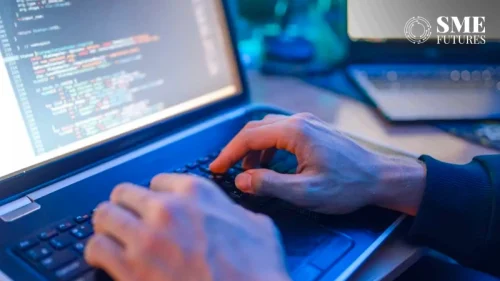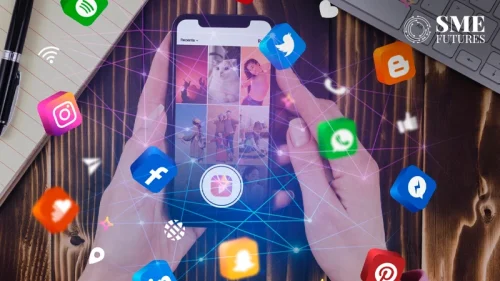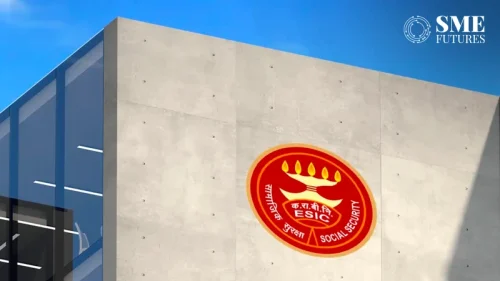Indian retail sphere was the first one to witness the wrath of COVID-19 crisis as the new normal such as lockdown and social distancing became prevalent. The extent of damage can be judged by an exorbitant loss of Rs 5.5 lakh crore incurred by the industry, said an apex industry body Confederation of All India traders (CAIT). Hence, the crisis has raised important questions about the fate of the industry such as how will the new shopping be like? How the retail and shopping experience is going to change? Is the impact going to last forever?
These all questions should be answered promptly for the future of retail during post COVID-19 time. The answers are more required now especially when World Health Organisation (WHO) has declared that new world order will not be Corona free completely. One of the primary impacts on the retail industry would be that consumer behaviour would change entirely. Experts are of opinion that although it is hard to say that whether this transformation would last forever or would end soon but future is certainly going to be different.
Observing the scenario, Amit Kumar Sirrohi, Head–Retail Business, Raymond Ltd says, “This is first time in our lives where all of us including our families have been confined to the four walls of our houses. This modifies a person and his or her outlook towards life. We have reprioritised and this is going to reflect in our shopping behaviour too,” He further suggests that retail industry need to revise their plans based on the changed consumer behaviour.
Changing Behaviour of Indian Consumers
Indian consumers are highly optimistic, states latest finding of McKinsey & Company’s survey on sentiments of Indian consumers. The survey states that most of the Indians believe that impact of COVID-19 on their routines and finances will last for more than two months. But in reality, consumers are experiencing a decline in their income and savings. Therefore, they are cutting back on spending, except for household essentials. In addition to this, consumers are also spending on stay-at-home entertainment, over-the-counter medicines, and health supplements.
They are expected to shop online more across many categories and are increasingly adopting digital and low-touch activities such as online streaming and digital payments. Also, consumers are stockpiling the essential goods now required for their families. Neighbourhood grocery stores have gained relevance again and there is an increase in online purchase and home delivery as most of the items are vanishing from kirana stores. There is also a surge in first time online buyers and it mostly comprises of older generation for shopping essential products.

Shoppers’ behaviour is likely to be different when the lockdown ends, which includes maintaining sufficient supply of products at their homes. There will be continuity in buying online of both essential and non-essential supplies. Consumers will also resume visits to stores or malls on condition they get trusted safety environment. But, these visits will not be frequent now and will be time bound. Lastly, the biggest change that behaviour of Indian consumers will undergo is adopting planned or focused purchases.
Emerging Trends of the Industry
Discussions on the evolution of shopping and retail sector have led experts in reaching to a conclusion that some existing trends in retail sector are accelerating and changing at much faster pace. It is faster than the rate of change which was expected to take place in few years.
Commenting on this Sundeep Bajoria, VP, South West Asia Operations, Coca Cola adds, “Trends are changing much faster such as people are quickly adapting to e-commerce and modern trade. Conversion of small grocers into aisle grocers has also been accelerated. Chinese trend of community buying has also been picked up by Indian retailers.”
Emphasis on Health and Hygiene
The biggest change related to shopping which we will witness in near future is enhanced social distancing.
“Informed shoppers would refrain from storming the market at once and will be particular to avoid crowding of any kind,” says Achin Gupta, Country Head—India at Zoook, a consumer technology product brand.
In the similar vein, Tushar Ved, President of Major Brands, observing the retail and consumer insights coming from countries like China afirms, “Definitely there will be less consumer walking in the mall, but the conversions will be very high.”

According to experts, social distancing, hygiene of employees, and contactless payments will become prominent.
“Practising social distancing norms will be a common priority among consumers in stores, while avoiding rush. Purchasing will be through contact less payment methods. This will eventually increase usage of mobiles, e-wallets, and UPI payments. If there are similar stores next to each other consumer will obviously pick the one with superior hygiene level.” Ved further adds.
Consumers will now spend less money more than usual but will buy essential products. The trend will be similar for eateries and food joints. While answering the question about how retailers will react to this, Vishesh Kaul—Head Sales & Operations at Airok Technologies, an air purifier brand told that store sanitisation and less physical exposure will be the key trend in the future. He reaffirms, “Once the lockdown is eased, the retailers will be cautious in the way of interacting with customers. Also most of the retailers will opt out newer ways of low physical interaction with consumers.”
According to him, physical stores are likely to adopt new technologies that will focus on to identifying and cleaning of key touch points such as door handles, lift buttons, key pads, stairs or escalator handrails, trial rooms etc. Store management will also focus on positioning of minimal individual interactive staff and there will be marked zone for physical distancing during billing. Echoing similar sentiments, Gupta of Zoook adds, “This also calls for shop owners or retailers to make appropriate changes in interiors to enable social distancing. Especially the billing counters need to be increased or streamlined to ensure adherence to the norms,” he suggests.

Will It Trigger Impulse Purchase?
Most of the experts are of opinion that there will be less impulse purchase. One of the major surprising responses that industry has been witnessing is people adding limited items in their shopping carts. Contemplating on the crisis outcome, retailers predict that consumers making fewer trips to mall might end up the craving or impulse purchases. This may also result in reverse of throw-away culture which is influenced by hyper-consumerism.
Sundeep Bajoria of Coca Cola also foresees the same impact. He professes, “The shopping trips will be focused now contrary to trips of the past when a shopping spree meant a family outing. This also means a lot more stocking; shopping will now revolve around essential items primarily. Consumers will plan their needs rather than shopping by impulse.”
Bajoria further added that planned buying is going to enhance brand relevance. A blend of consumer sentiments around health, hygiene, safety, and precautions will bolster trust of consumers.
A lot of established brands will certainly get a boost in the sales. Overall, sustainability, safety, origin, and trust are going to be central themes which will drive consumer behaviour in future. Gurpreet Singh Brar, Senior Director—Channel Sales and Distribution, HP also is in favour of the trend of planned buying. He remarks, “Splurging will take time to come back in trends. Also, people will shop on online platforms more. Going forward for the long term sustenance, omni-channel model is going to be a big reality for retailers especially in our business line.”
Though current consumer trends predict planned buying, Chinese consumer trends are witnessing completely different kind of behaviour, revenge buying, or revenge spending. Lately, Chinese top brands such as Hermes, Apple, Louis Vitton, Gucci and Prada saw huge increase in sales due to heavy splurging by customers after lockdown. Hermes on first day of its re-opening in Guangzhou registered US$2.7 million in sales. Consumers were seen queuing in large numbers in front of top luxury stores.
The question which now arises is will Indians also go for revenge buying? Experts opine that it might be a possibility since shopaholics exist everywhere. “When the economy opens up, the initial shoppers going for revenge buying will be mostly millennial, discount seekers, and bargain hunters,” said Retailers Association of India (RAI) in a statement. Speaking on the shopping spree trend Sumit Ghosh, Director at Fossil India asserts, “I believe initial shoppers would be millennials going for revenge buying; discount seekers and bargain hunters in the malls. Also, brands having credibility and resonance with customers will bounce back much faster.”
E-commerce Will Become a New Normal Now
The new trends developed during lockdown have pushed the consumers to shop more through online platforms. A latest market research by Ipsos states that consumers are shopping through online platforms more frequently now. Globally, Vietnam has witnessed largest increase in the e-commerce shopping with 57 per cent of consumers shifting their purchase online. In addition to this, 55 per cent of Indian consumers have shifted their purchases online.
China (50 per cent) and Italy (31 per cent) are also seeing an increase. On this Ajay Kapoor, President—Retail at FAB India comments, “Online shopping for sure is going to grow because customers will take time to adapt to the new normals and consider themselves safe while shopping.” On the same note Manish Kapoor, CEO of Pepe Jeans India says, “With safety concerns lurking in after lockdown, people will be more comfortable in making their purchases online rather than going out and contracting the disease. However, the mindset and preference of buying online or offline depends on the time also.”
According to a data analytics firm GlobalData, e-commerce market in India is slated to grow at a compound annual growth rate (CAGR) of 19.6 per cent between 2019 and 2023 to reach Rs 7 trillion (US$98.4 billion) by 2023. As consumers are increasingly shifting from retail shopping to online purchases due to fear of getting exposed to disease vectors such as cash and point of sale (POS) terminals, e-commerce payments are set to record a steep increase of 25.9 per cent in 2020 itself.

Commenting on the revelations, Banking and Payments Lead Analyst at the firm Ravi Sharma affirms, “The current lockdown in the country has led to an overall decline in consumer spending. This is being partially offset by a rise in online spending, as wary consumers stay at home and use online channels to purchase goods. This will have greater implications on buying behaviour of Indian consumers pushing them to embrace e-commerce.”
The government earlier prohibited e-commerce companies from selling or delivering non-essentials products until the end of the lockdown period. However, this restriction was partially lifted on 5 May 2020 with e-commerce companies now resuming the delivery of all products including essential and non-essential. The delivery will be across the country except areas in red zone where number of corona cases is very high.
How Retailers can Re-invent?
Experts agree that retail businesses across India will take a considerable time to recover from the impact of the COVID-19 lockdown, but are also of opinion that it can pave the way to find new opportunities and staying positive. Retailers also believe that the pandemic has presented several opportunities for the trading community, irrespective of their scale or category. This opportunity could simply mean a product extension, trying out a different line of business, or innovative ways of marketing. Opportunity could also be in the form of new collaborations and partnerships.
One of the opportunities is going omni-channel to give consumers seamless and comprehensive shopping experience across all platforms. Retailers can enhance their sales if they adopt omni-channel capabilities told Ravinder Gupta, CEO of Chappan Bhog in a webinar. He further tells, “Retailers now must make use of the omni-channel formats to boost their business as that is going to be the new normal. Customers would expect better service, quick home delivery, and more sensitivity towards their choices and tastes. Hence, retailers have to be innovative and open -minded going forward.”

Advocating the omni-channel strategy, Gurpreet Singh of HP suggests, “I am seeing lines between offline and online purchases getting blurred already. Going forward and living with new normal, omni-channel strategy is going to become a reality, especially in our kind of retail business.” Further talking about what retailers can change to ensure high turnouts in this crisis, Singh points out that first of all retailers will need to ensure a safer environment for customers.
Secondly, to redeploy or repurpose the manpower (such as for chats, live or phone conversations), HP is conducting workshops for their partners on digital marketing. This step will pave the way for partners to capitalise on opportunity in case of potential customers. Other aspect is where retailers can work is to make customer experience better. For instance, pre-booking of slots for store visiting and how they can drive the traffic with better services like hyperlocal delivery.
In the end, retailers can leverage e-commerce platforms by converting offline presence to online. Kapoor of Pepe Jeans adding on the measures tells that retailers should put emphasis on four areas. He suggests, “Retailers should focus on growing efficiency and maintaining cash flow. They should also increase communication in reaching out to the consumers with right information which is critical at this time. Lastly, if business is getting affected by a flawed business model, they should disinvest and exit from it.”
Conclusively, apparent change in consumer behaviour and forward trends in shopping experience can be a key to formulate innovative ways to thrive in post COVID-19 era. The crisis has hence created a lasting impact on consumers’ behaviour all across the retail sector and preponed some of the trends that were about occur in near future.










